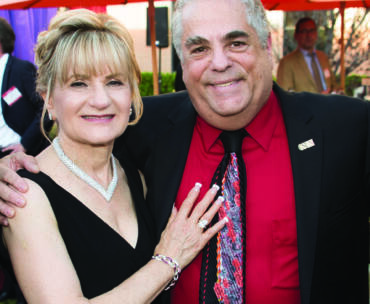
Media Contacts: Kaley Block, kaley.block.788@my.csun.edu, or Javier Rojas, javier.rojas@csun.edu, (818) 677-2130
After plane accidents and natural disasters, it’s normal to ask yourself what life would be like if you experienced a deep trauma, how it would impact your relationships and how you would move past it?
Diane Gehart, a professor emeritus in California State University, Northridge’s Department of Education Psychology and Counseling and a licensed marriage and family therapist, and CSUN professor emeritus Ron Borczon, former director of the CSUN Music Therapy Wellness Clinic, point out that trauma, as defined by mental health professionals, does not describe a negative experience. Instead, it refers to a specific type of incident in which the brain and body respond to a life-threatening external environment that is life threatening.
“A full trauma is when your limbic system and the stress response totally takes over,” said Gehart. “I call it a ‘five-bell-alarm’ where your life is in danger. What happens is this middle region of the brain, that has the limbic system, kicks in and the prefrontal cortex, where more complex cognitive functioning happens, is less active. You have a whole different physiology when this is going on.
“When it’s truly a ‘five-bell-alarm.’ your hippocampus – which is the memory center that integrates what you’re seeing, what you’re hearing, what you’re thinking and what you’re feeling into a coherent video or memory – goes off,” she continued. “All of those memories just get scattered in what we call ‘implicit memories’ around the brain. Trauma treatment involves gathering all of these implicit memories — that will come back as flashbacks — reintegrating all of the sight, sounds, smells, thoughts, emotions that you had into a coherent memory and the idea is that you can recall what happened or tell the story of what happened without flipping your lid, and that’s how you know you have processed your trauma neurologically.”
Borczon, founder of CSUN’s music therapy program said that programs like his use music as a therapeutic way to help people process trauma.
“My students have a duty to their clients to be the best music therapist that they can be,” said Borczon, explaining the intensity of the program.. “You must be able to be a musician. You must be able to play piano, guitar, ukulele and percussion. You must be able to sing, and you must have a general interest in helping others.”
In explaining the ways in which trauma impacts the brain and body, Gehart noted that these natural responses set trauma apart from other mental health disorders.
“It’s actually one of the most treatable things of all the mental health disorders,” she said. “When compared to generalized anxiety, depression or substance abuse, trauma is highly treatable. Trauma usually is most closely associated with post-traumatic stress disorder, and it really is at the root of so much of what we deal with as therapists. In mental health, going back, looking at those issues and helping people reprocess, the trauma memory is essential to getting lives back on track.”
Borczon pointed to the importance of music therapy in helping individuals and communities get their lives back on track following major traumatic experiences, whether man-made or natural disasters.
“I find going into the community — after all the cameras have gone and the people are left still sitting with the trauma three to four weeks later — and working with them, getting them to process the trauma through music and to express it is helping them look to the future,” he said. “You know, it might be hard, but there’s value to being in the moment with others and with the music, getting them to express what’s happened to them.
“When you listen to a piece of music, your brain is firing in a lot of different ways than when you just hear someone speak,” he continued. “It’s processed differently when you create music. The brain is lighting up all over the place, it’s both hemispheres talking to one another. There’s this thing called neuroplasticity in the brain, where music can help the brain heal by making different connections that were previously not there.”




Comments are closed.